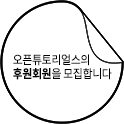설명
The HTML B Element (<b>) represents a span of text stylistically different from normal text, without a conveying any special importance or relevance. It is typically used for keywords in a summary, product names in a review, or other spans of text whose typical presentation would be boldfaced. Another example of its use is to mark the lead sentence of each paragraph of an article.
<b>요소는 텍스트의 특별한 중요도나 관계성에 상관없이 일반 텍스트와 다른 효과를 주고자 할 때 사용한다. 이 요소를 적용하면 글씨가 굵게 표시된다. 일반적으로 이 엘리먼트는 중요 단어나 상품 리뷰에서 상품 이름, 텍스트 중에 일반적으로 진하게 표시되는 것들에 사용한다. 또 다른 사용법의 예로는 글의 문단에서 첫번째 문장에 사용되기도 한다.
Do not confuse the <b> element with the <strong>, <em>, or <mark> elements. The <strong> element represents text of certain importance, <em> puts some emphasis on the text and the <mark> element represents text of certain relevance. The <b> element doen't convey such special semantic information; use it only when no others fit.
하지만 <b>요소를 <strong>이나 <em>이나 <mark>등의 다른 엘리먼트와 혼동해서는 안된다. <strong>요소는 텍스트의 어떤 중요도를 표시할 때 사용되며, <em>요소는 텍스트를 강조할 때 사용한다. 그리고 <mark>요소의 경우에는 텍스트의 어떤 연관성을 표시하는데 사용된다. 앞서 설명했던 <strong>, <em>, <mark>요소가 <b>요소와의 차이점은 <b>요소는 특정 문단 정보를 포함하지 않는다. 위에 나열된 요소들이 사용될 만한 곳은 아니지만 글씨를 굵게 설정해주소 깊을 때 <b>요소를 사용한다.
Similarly, do not mark titles and headings using the <b> element. For this purpose, use the <h1> to <h6> tags. Further, stylesheets can change the default style of these elements, with the result that they are not necessarily displayed in bold.
비슷한 원리로, 타이틀이나 헤딩에는 <b>태그를 사용하지 마라. 타이틀, 헤드를 목적으로는 부분에는 <h1>부터 <h6>까지의 <h>요소를 사용한다. <h>요소를 사용하는 것이 본래의 의미에 맞는 것이며, 기본 설정이 굵게 표시되기 때문에 굳이 <b>태그를 사용할 필요가 없다. <h>요소에 굵게 표시된 옵션이 싫다면 스타일시트에서 수정할 수 있다.
It is a good practice to use the class attribute on the <b> in order to convey additional semantic information (for example <b class="lede"> for the first sentence in a paragraph). This eases the development of several stylings of a web document, without the need to change its HTML code.
<b>요소에 추가적인 정보의 전달을 위해서 class 속성(예를 들면, 문단의 첫번째 문장에 <b class="lede">을 사용한다.)을 이용하는 것은 좋은 프로그래밍 습관이다. 이러한 습관은 HTML 코드를 바꿀 필요없이 웹 문서에 몇가지 스타일을 줄수있어서 개발을 용이하게 해준다.
Historically, the <b> element was meant to make text boldface. Styling information has been deprecated since HTML4, so the meaning of the <b> element has been changed.
역사적으로, <b>요소는 텍스트를 굵은 글씨로 만드는 것으로 여겨졌다. HTML4에서부터 <b>요소의 적용 가능했던 스타일이 사용중지됨에 따라 <b>엘리먼트의 사용도 변화되었다.
Usage Context
| Content categories | Flow content , Phrasing content |
| Permitted content | Phrasing content |
| Tag omission | None, both the start tag and the end tag are mandatory |
| Permitted parent elements | Any element that accepts phrasing content |
| Normative document | HTML5, section 4.6.16 (HTML4.01, section 15.2.1) |
속성
Like all other HTML elements, this element supports the global attributes.
| 지원 | Gecko | Presto | WebKit | Trident |
| Normative document |
예제
<p> 생활코딩 공동번역은 <b>누구나</b> 참여가능 하며, <b>누구나</b> 쉽게 볼 수 있을 것입니다. </p> <p> 요소를 적용한 글씨는 <b>굵게</b> 표시됩니다. </p>
DOM Interface
This element implements the HTMLElement interface.


